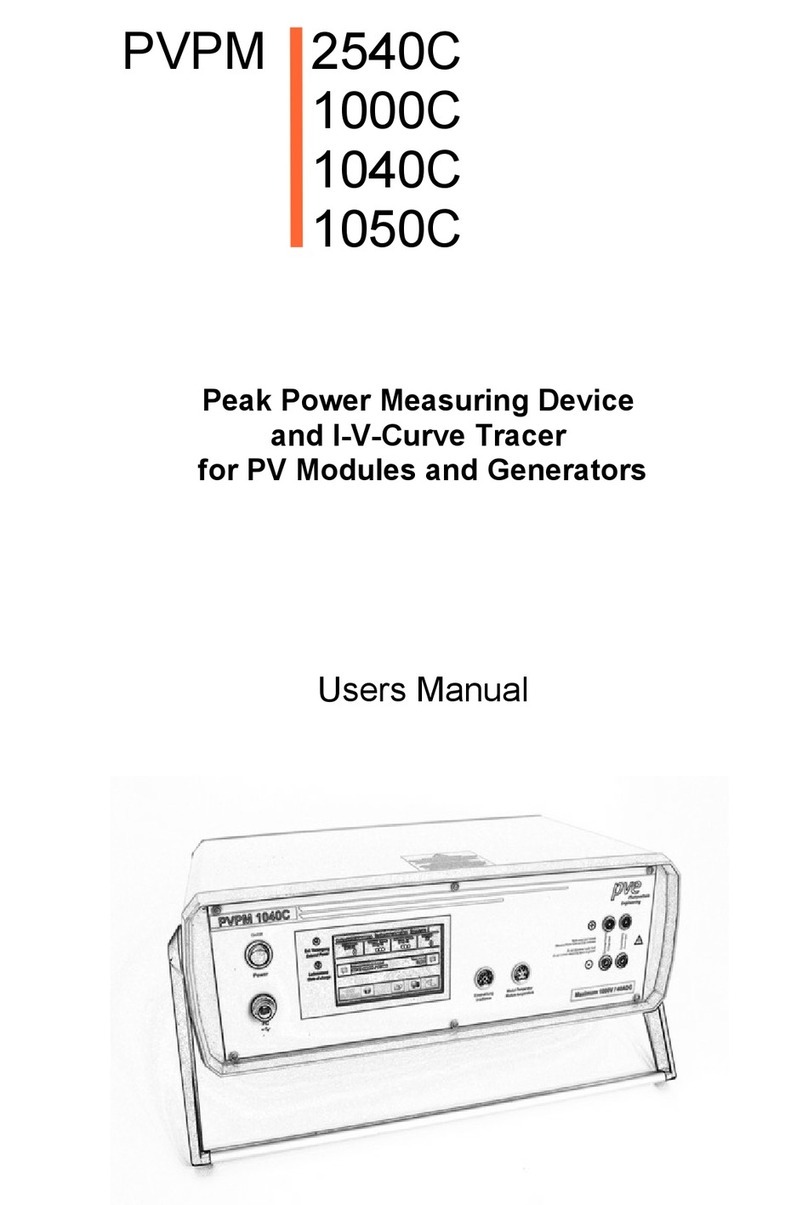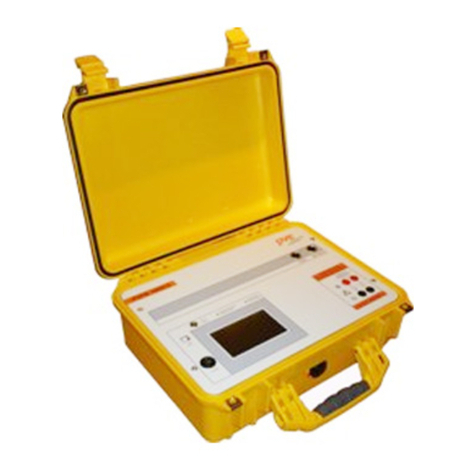1S ftware End User License Agreement 3
Contents
1 SOFTWARE END USER LICENSE AGREEMENT..........................................................................................................................5
2 INTRODUCTION.................................................................................................................................................................................. 6
3 NORMAL USE....................................................................................................................................................................................... 6
4 SAFETY REQUIREMENTS................................................................................................................................................................ 7
5 OPERATION OF THE PVPM..............................................................................................................................................................9
5.1 OPERATING AND CONNECTION ELEMENTS....................................................................................................................................................9
5.2 GENERAL HINTS................................................................................................................................................................................. 10
5.3 CONNECTING PERIPHERAL DEVICES........................................................................................................................................................10
5.4 POWER SUPPLY................................................................................................................................................................................... 11
5.5 CONNECTING A PC.............................................................................................................................................................................. 11
5.6 CONNECTING THE SOLAR GENERATOR..................................................................................................................................................... 11
5.7 CONNECTING THE COMBINATION SENSOR.................................................................................................................................................11
5. SWITCHING-ON...................................................................................................................................................................................12
5.9 KEYS................................................................................................................................................................................................ 12
5.10 MEASUREMENT................................................................................................................................................................................. 12
5.11 MENUS........................................................................................................................................................................................... 13
5.12 MESSAGES....................................................................................................................................................................................... 15
6 E TERNAL SECURITY SWITCH 1000V / 25A..............................................................................................................................16
7 IMPACTS ON THE ACCURACY OF THE MEASUREMENT......................................................................................................17
8 INSTALLATION OF THE TRANSFER SOFTWARE PVPM.DISP...............................................................................................19
9 INSTALLING THE USB DEVICE DRIVER.....................................................................................................................................20
9.1 INSTALLATION WITH „NEW HARDWARE FOUND“.........................................................................................................................................20
9.2 UNINSTALLING THE CDM DRIVER..........................................................................................................................................................23
10 OPERATION OF THE SOFTWARE PVPM.DISP.........................................................................................................................24
10.1 MAIN MENU FILE.............................................................................................................................................................................24
10.2 EDIT............................................................................................................................................................................................... 26
10.3 EXTRA............................................................................................................................................................................................ 26
10.4 DIAGRAM........................................................................................................................................................................................ 29
10.5 RESULTS / LISTS............................................................................................................................................................................... 30
10.6 HELP (NOT YET IMPLEMENTED)............................................................................................................................................................31
11 HARDWARE INFORMATION........................................................................................................................................................ 32
11.1 MEASURING UNIT:............................................................................................................................................................................32
11.2 CALCULATION UNIT:.......................................................................................................................................................................... 33
11.3 DISPLAY:......................................................................................................................................................................................... 33
11.4 OPERATION:..................................................................................................................................................................................... 33
11.5 POWER SUPPLY:................................................................................................................................................................................ 33
11.6 DIMENSIONS.....................................................................................................................................................................................33
11.7 OPERATION CONDITIONS:.................................................................................................................................................................... 33
11. OPTIONALLY AVAILABLE:..................................................................................................................................................................... 33
12 LIST OF SYMBOLS.......................................................................................................................................................................... 34
13 REASONS FOR DECREASED POWER AND YIELD OF PV GENERATORS..........................................................................35
14 I-U DIAGRAM: E PLANATION....................................................................................................................................................36
15 SAMPLE CURVES............................................................................................................................................................................ 40
16 GLOSSARY........................................................................................................................................................................................ 43
16.1 AZIMUTH (SS) AND ELEVATION (Α)........................................................................................................................................................43
16.2 SLOPE............................................................................................................................................................................................. 43
16.3 DC................................................................................................................................................................................................43
16.4 DEGRADATION CHARACTERISTIC...........................................................................................................................................................43
16.5 DIRECT RADIATION/ DIFFUSE RADIATION.................................................................................................................................................43
16.6 GENERATOR.....................................................................................................................................................................................43
16.7 GLOBAL/TOTAL RADIATION.................................................................................................................................................................. 44
16. SHORT-CIRCUIT CURRENT OF SOLAR CELLS..............................................................................................................................................44
16.9 MISMATCHING..................................................................................................................................................................................44
16.10 MPP........................................................................................................................................................................................... 44
16.11 TRACKING......................................................................................................................................................................................44
16.12 PEAK POWER.................................................................................................................................................................................44
16.13 PERFORMANCE RATIO...................................................................................................................................................................... 44
16.14 PHOX-SENSOR................................................................................................................................................................................44
16.15 INTERNAL SERIES RESISTANCE.............................................................................................................................................................45
16.16 SOLAR CONSTANT........................................................................................................................................................................... 45
16.17 SOLAR IRRADIATION / INSOLATION.......................................................................................................................................................45
16.1 CURRENT-VOLTAGE-CHARACTERISTIC.................................................................................................................................................45
16.19 FOUR-WIRE MEASUREMENT (KELVIN MEASUREMENT).............................................................................................................................46
16.20 EFFICIENCY.................................................................................................................................................................................... 46
17 APPENDI A...................................................................................................................................................................................... 47
17.1 - INDICATOR LIGHTS IN THE FRONT PANEL...............................................................................................................................................47
17.2 SPEAKER SIGNALS:.............................................................................................................................................................................47
Operati n manual f r PVPM devices PV-Engineering GmbH






























